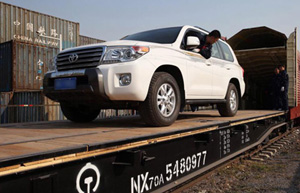BEIJING - There's no need to worry that an expected launch of work on a free trade zone would complicate the trade terrain in the Asia-Pacific. Instead, it would raise hopes for a solution of the current "spaghetti bowl" dilemma.
Attention has been heightening on the prospects of establishing the Free Trade Area of the Asia-Pacific (FTAAP) as a series of high-profile Asia-Pacific Economic Cooperation (APEC) meetings opened this week. One of the meeting's outcomes, China expects, could be the start of the FTAAP process.
Those who see the move as China's challenge to the under-negotiation Trans-Pacific Partnership (TPP) and anticipate diplomatic wrestling over it will find their speculations unfounded and unnecessary.
 |

|
The FTAAP is not a new idea, nor was it first brought onto the table by China. China suggested feasibility study on the FTAAP in February this year, but it was first proposed in 2004 and written into the declaration of the APEC leaders' meeting in 2006.
An annual meeting of APEC trade ministers in May reiterated the resolution to draft a roadmap for the FTAAP to be finalized within this year.
The idea gained traction as the region's mushrooming free trade pacts resulted in growing complexity and costs for exporters and importers. As a host of the 2014 APEC meetings, China's determination to push for concrete steps on the FTAAP only showcased its efforts to shoulder more international responsibility, since the country has been repeatedly urged to do so.
The impasse in the Doha round of global multilateral trade talks gave impetus to a proliferation of smaller free trade agreements (FTAs) in the region. They brought some benefits but also unwanted troubles: different tariff schemes, complicated rules of origin, trade discrimination over countries excluded from the FTAs, to list a few.
Against that backdrop, APEC economies' enthusiasm to integrate the varying and overlapping FTAs is understandable.
The TPP and the Regional Comprehensive Economic Partnership (RCEP) are also part of the efforts to disentangle the "spaghetti bowl", but each of them involves only some of the region's economies.
If some argue a smaller number of participants could make talks easier, they are wrong. TPP negotiations have been stalled by US-Japan divisions over farm-produce trade barriers, while different stages of development and varying understanding on tariff concessions made RCEP progress slower than expected.
If APEC leaders reach consensus on launching the FTAAP process in the following meeting week, it will lay a sound foundation for the regional free trade zone and send a heartening signal to the global free trade momentum.
However, the FTAAP is not a competitor or contradictory to the TPP or the RCEP. Achievements and lessons from both TPP and RCEP talks can contribute to the ultimate goal of establishing a free trade area that benefits all APEC economies. They can run in parallel and complement one another.
Therefore, information sharing and interaction should be strengthened among TPP, RCEP and other regional trade arrangements. Nor should anyone continue to pitch one of them against the FTAAP, because a better future of Asia-Pacific trade demands an open table and an open mind.
